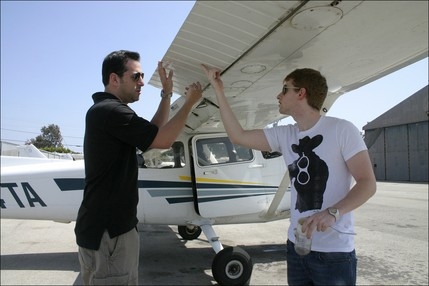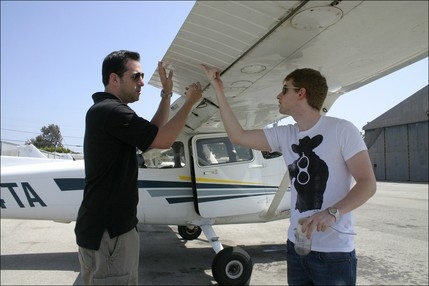
CITY HALL — In an attempt to cut down on air traffic around Santa Monica Airport (SMO), city officials are proposing to pay flight schools to take some of their lessons elsewhere.
The idea, announced during a study session on SMO Tuesday night, involves reimbursing flight schools for some of the cost of traveling to another airport to practice pattern flying, an essential maneuver for beginning pilots who need to practice taking off and landing.
Pilots flying in the pattern can take off and land multiple times in a relatively short period, something that neighbors of the airport from Santa Monica and West Los Angeles dislike because they say planes are constantly overhead making noise.
Paying flight schools to take the pattern flying to another airport with fewer people around it seemed like a way to cut down on one of their major complaints and make the airport a better neighbor, said Martin Pastucha, director of Public Works.
“We can’t force (the flight schools) to do anything because they have the right to fly where they want,” Pastucha said. “But understanding that there are concerns about this from the residents, we asked is there a way to look at moving the operation elsewhere?”
Right now, instructors and their clients fly around Santa Monica and West Los Angeles because the additional time and fuel needed to get to another airport is expensive.
It costs an average of $150 for a plane to get to another airport and come back, said Joseph Justice, owner of Justice Aviation, one of the largest flight schools at SMO.
“The only reason the pattern work is done here is that it costs the person paying to move to another airport,” he said.
City Hall hasn’t worked out how much of a reimbursement flight schools would get to fly to other airports, but officials have created an outline for the program.
Pilots would have to fill out a form and get a copy of a logbook entry to prove that they had actually gone to another place to fly the pattern. That paperwork would be submitted to City Hall on a monthly basis.
Then, flight schools would receive a reimbursement, which could be paid out to the customer, depending on how they structured the deal.
The amount of reimbursement hasn’t yet been decided, but it will be based on the amount of money it costs to use the plane for the additional time, Pastucha said.
It would not cover the total amount, and the reimbursement would be the same, no matter if the pilot went to Burbank, Hawthorne, Van Nuys or any other airport in the immediate vicinity.
The program is not a certainty, and will still have to be put to all of the flight schools and then to the City Council, Pastucha said.
The council could see the concept within two or three months.
If the program doesn’t reduce the amount of pattern flying, it would end, Pastucha said.
“This is a test program,” he said. “We’re going to try it and see how effective it is, how it works. If it doesn’t, we’ll end it.”
The idea didn’t get off the ground with residents, who told council members that paying the flight schools for peace would be “blood money.”
“I don’t see why we should be subsidizing them,” said Vivien Flitton, a resident of Santa Monica. “They’re already subsidized by discounted rents.”
Ofer Grossman, an airport commissioner who advises the City Council on SMO-related matters, called the program “innovative and interesting,” and blamed the forum for the public’s negative reaction.
The study session was meant to look at options for the future of the airport, a process that many residents of Santa Monica and Los Angeles alike are unhappy with.
The stage was set for vitriol.
“The problem is that the public is not receptive because of the manner in which the report is presented,” Grossman said. “It’s coming without the ground being plowed for the seeds to take root.”
It did catch the imagination of City Councilmember Kevin McKeown, who pressed Los Angeles City Councilmember Bill Rosendahl for help paying for the program.
He called it an “intriguing option.”
“I’m happy to sit down ... and work it out if we can,” Rosendahl said.
The city of Los Angeles is cash strapped, struggling to close a projected $238 million budget deficit.
ashley@www.smdp.com








